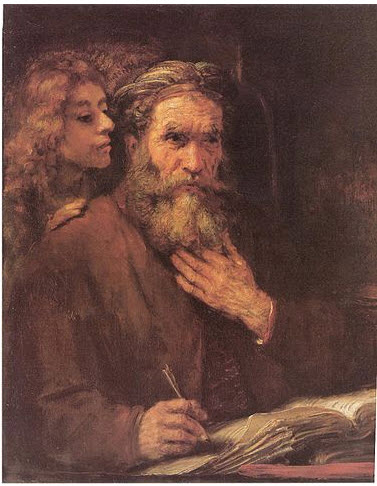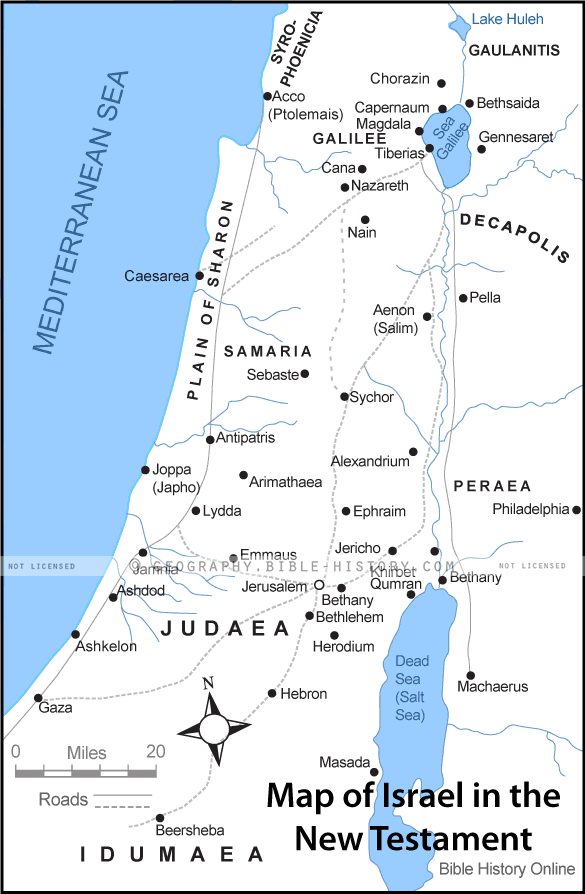Matthew 17:7 And Jesus came and touched them, and said, Arise, and be not afraid. - Free Bible Online
Matthew 17:7 And Jesus came to [them] and touched them and said, "Arise, and do not be afraid."
JFB.
Questions Related to this Verse
Where in Scripture does it talk about having faith in Jesus Christ?Select a Chapter
-
Matthew 1 |
Matthew 2 |
Matthew 3 |
Matthew 4 |
Matthew 5 |
Matthew 6 |
Matthew 7 |
Matthew 8 |
Matthew 9 |
Matthew 10 |
Matthew 11 |
Matthew 12 |
Matthew 13 |
Matthew 14 |
Matthew 15 |
Matthew 16 |
Matthew 17 |
Matthew 18 |
Matthew 19 |
Matthew 20 |
Matthew 21 |
Matthew 22 |
Matthew 23 |
Matthew 24 |
Matthew 25 |
Matthew 26 |
Matthew 27 |
Matthew 28 |
Select a Book of the Bible
-
Genesis |
Exodus |
Leviticus |
Numbers |
Deuteronomy |
Joshua |
Judges |
Ruth |
1 Samuel |
2 Samuel |
1 Kings |
2 Kings |
1 Chronicles |
2 Chronicles |
Ezra |
Nehemiah |
Esther |
Job |
Psalms |
Proverbs |
Ecclesiastes |
Song of Solomon |
Isaiah |
Jeremiah |
Lamentations |
Ezekiel |
Daniel |
Hosea |
Joel |
Amos |
Obadiah |
Jonah |
Micah |
Nahum |
Habakkuk |
Zephaniah |
Haggai |
Zechariah |
Malachi |
Matthew |
Mark |
Luke |
John |
Acts |
Romans |
1 Corinthians |
2 Corinthians |
Galatians |
Ephesians |
Philippians |
Colossians |
1 Thessalonians |
2 Thessalonians |
1 Timothy |
2 Timothy |
Titus |
Philemon |
Hebrews |
James |
1 Peter |
2 Peter |
1 John |
2 John |
3 John |
Jude |
Revelation |
The Book of Matthew
Matthew 2:2 - Where is he that is born King of the Jews? for we have seen his star in the east, and are come to worship him.
Matthew 18:3 - And Jesus said, Verily I say unto you, Except ye be converted, and become as little children, ye shall not enter into the kingdom of heaven.
Matthew in The New Testament - A Brief Overview

Painting of St. Matthew with Angel by Rembrandt
The Word Gospel. The first book of the English Bible that most of us read from is the Gospel of Matthew. Matthew is the first of the four gospel writings, yet there is only one gospel about Jesus Christ and there are four different writers: Matthew, Mark, Luke, and John. The word "Gospel" means "good news", and the good news is about Jesus Christ dying on the cross and then 3 days later conquering death and rising from the dead, offering salvation to all mankind, this is the Gospel.
Summary of the Book of Matthew
Brief Summary. Jesus of Nazareth is indeed the long awaited Messiah King of he Jews as foretold by the ancient Jewish prophets. He came to reveal how to enter the "Kingdom of Heaven."
Purpose. It is very obvious that the Gospel of Matthew was written for the purpose of revealing that the man Jesus of Nazareth was actually the King of the Jews, the long awaited Messiah, the sovereign Lord Jehovah who came from heaven to this world revealing to mankind the "kingdom of heaven". The King of the Jews, the Messiah Jesus fulfilled every prophecy that was spoken about Him in the ancient Jewish Scriptures, in the Old Testament. The prophecies that spoke of the "Kingdom" that the Messiah would bring would be a spiritual Kingdom that would never be destroyed.
Audience. When reading the book of Matthew it becomes clear that the writer was speaking to a Jewish audience. One of the obvious reasons is that the "Kingdom of Heaven" is mentioned over 30 times and never the Kingdom of God. This is because the Jews do not speak the name of God and this could be the very reason that Matthew used this phrase. There are many times while reading the book that an event happens and a prophecy is cited. The event is mentioned as the direct fulfillment of a promise made to the Jews by one of their Jewish prophets, and the fulfillment of the prophecy was happening before their very eyes. It is clear that the audience of people are the Jews, they were awaiting their King, and Matthew records that the King had come and they rejected their King.
Authorship. Early Christian writings and traditions have attributed the authorship of the Gospel of Matthew to the apostle Matthew. Many scholars question whether or not Matthew was the true author of the first Gospel, but there is no way at this current time to be absolutely positive based on historical evidence. Most agree that Matthew was the author. The Bible reveals that Matthew, or Levi, as he was sometimes called, collected taxes for the Romans. One day Jesus passed by and called Matthew to come and follow him, and Matthew did so. The Bible also records that Matthew held a banquet at his house with several of his tax collector friends and Jesus being invited to the banquet was the guest of honor (Mark 2:14-15). The Bible also provides a list of the 12 apostles and Matthew was named among them.
Date. There is no way to determine with absolute certainty the date that the book of Matthew was written. Most scholars agree that the book of Matthew was written before the destruction of Jerusalem in 70 A.D., this is because Jesus spoke of many events as though they had not happened yet. A large number of scholars do not believe in the miracle of prophecy and therefore insist that the Gospel of Matthew was written after the fall of Jerusalem because of the accuracy of the predicted events.
Language. There are many references among the books in the history of the early church that state that the Gospel of Matthew was originally written by Matthew in the biblical Hebrew language, and he was writing to an audience of Jews throughout the world who had become followers of Jesus. Unfortunately there is no evidence whatsoever of a Hebrew or Aramaic manuscript, so many scholars have agreed that the Gospel of Matthew is not actually a translation from Hebrew into Greek, but was actually written in Greek. The whole subject of the Gospel of Matthew being written in Hebrew must remain speculation rather than fact.
Outline of the Book of Matthew
The King Comes and His Kingdom is Rejected -
Matthew 1-12
The Rejection of the King's Teaching and Ministry -
Matthew 13-25
The King's Trial and Crucifixion - Matthew 26-27
The King's Victory and Resurrection - Matthew 28
The King's Commissioning of His Apostles -
Matthew 28
Matthew - Interesting Notes
![]() Matthew mentions four women in his genealogy which is not
typical for Jewish genealogical records: Tamar, Rahab,
Ruth, Bathsheeba who were all associated with some sort of
immorality. Tamar (incest), Rahab (harlotry), Ruth (a descendant
of Moab who committed incest) and Bathsheba (adultery). Christ's
greatness was in Himself not his genealogy.
Matthew mentions four women in his genealogy which is not
typical for Jewish genealogical records: Tamar, Rahab,
Ruth, Bathsheeba who were all associated with some sort of
immorality. Tamar (incest), Rahab (harlotry), Ruth (a descendant
of Moab who committed incest) and Bathsheba (adultery). Christ's
greatness was in Himself not his genealogy.
![]() There are many intimations for the word "King" in Matthew if one takes
the time to look. For example in chapter one there is a royal genealogy
mentioning king David at the start. Chapter two reveals the kingly gifts
of the Magi. Chapter three calls John the Baptist a "herald" which is a
cultural term that represents a herald for a king. Etc.
There are many intimations for the word "King" in Matthew if one takes
the time to look. For example in chapter one there is a royal genealogy
mentioning king David at the start. Chapter two reveals the kingly gifts
of the Magi. Chapter three calls John the Baptist a "herald" which is a
cultural term that represents a herald for a king. Etc.
![]() There are similarities with the number four. The four colors in the veil
of the Temple were purple, scarlet, white, and blue. The four faces of
the cherubim are the lion, ox, man, eagle. The four Gospel accounts are
Matthew, Mark, Luke, John.
There are similarities with the number four. The four colors in the veil
of the Temple were purple, scarlet, white, and blue. The four faces of
the cherubim are the lion, ox, man, eagle. The four Gospel accounts are
Matthew, Mark, Luke, John.
Quick Reference Maps - Matthew
The Kingdom of Herod the Great
The Divisions of Herod's Kingdom
The Beginning of Christ's Ministry
Nazareth and the Sea of Galilee
Jerusalem in the Time of Jesus
Jesus Journeys from Nazareth to Jerusalem
The Final Journey of Jesus to Jerusalem

The Name Jesus In Ancient Hebrew Text
"Yeshua" in First Century Hebrew Text. This is how the name "Jesus"
would have been written in ancient Hebrew documents. The four letters or
consonants from right to left are Yod, Shin, Vav, Ayin (Y, SH, OO, A).
Jesus is the Greek name for the Hebrew name Joshua or Y'shua which means
"The LORD or Yahweh is Salvation".
Matthew Resources
Outline of the Life of Jesus in Harmony
Simple Map of First Century Israel
Topographical Map of First Century Israel
Map of the Ministry of
Jesus
Map of the Roads in Ancient Israel
Map of the Roman Empire
Bibliography Information
Free Bible Online Picture Study Bible, King James Version. New York: American Bible Society: www.free-bible.com, 1995-2013. Bible History Picture Study Bible. Dec 26, 2025.
- King James Bible Home
- Free Bible Home Page
- Bible Encyclopedia (ISBE)
- Online Bible (KJV)
- Naves Topical Bible
- Smith's Bible Dictionary
- Easton's Bible Dictionary
- Fausset's Bible Dictionary
- Matthew Henry Bible Commentary
- Hitchcock's Bible Dictionary
Read The Bible
- 1599 Geneva Bible (GNV)
- 21st Century King James Version (KJ21)
- American Standard Version (ASV)
- Amplified Bible (AMP)
- Amplified Bible, Classic Edition (AMPC)
- Authorized (King James) Version (AKJV)
- BRG Bible (BRG)
- Christian Standard Bible (CSB)
- Common English Bible (CEB)
- Complete Jewish Bible (CJB)
- Contemporary English Version (CEV)
- Darby Translation (DARBY)
- Disciples’ Literal New Testament (DLNT)
- Douay-Rheims 1899 American Edition (DRA)
- Easy-to-Read Version (ERV)
- English Standard Version (ESV)
- English Standard Version Anglicised (ESVUK)
- Evangelical Heritage Version (EHV)
- Expanded Bible (EXB)
- GOD’S WORD Translation (GW)
- Good News Translation (GNT)
- Holman Christian Standard Bible (HCSB)
- International Children’s Bible (ICB)
- International Standard Version (ISV)
- J.B. Phillips New Testament (PHILLIPS)
- Jubilee Bible 2000 (JUB)
- King James Version (KJV)
- Lexham English Bible (LEB)
- Living Bible (TLB)
- Modern English Version (MEV)
- Mounce Reverse Interlinear New Testament (MOUNCE)
- Names of God Bible (NOG)
- New American Bible (Revised Edition) (NABRE)
- New American Standard Bible (NASB)
- New American Standard Bible 1995 (NASB1995)
- New Catholic Bible (NCB)
- New Century Version (NCV)
- New English Translation (NET)
- New International Reader's Version (NIRV)
- New International Version - UK (NIVUK)
- New International Version (NIV)
- New King James Version (NKJV)
- New Life Version (NLV)
- New Living Translation (NLT)
- New Matthew Bible (NMB)
- New Revised Standard Version (NRSV)
- New Revised Standard Version Catholic Edition (NRSVCE)
- New Revised Standard Version, Anglicised (NRSVA)
- New Revised Standard Version, Anglicised Catholic Edition (NRSVACE)
- New Testament for Everyone (NTE)
- Orthodox Jewish Bible (OJB)
- Revised Geneva Translation (RGT)
- Revised Standard Version (RSV)
- Revised Standard Version Catholic Edition (RSVCE)
- The Message (MSG)
- The Voice (VOICE)
- Tree of Life Version (TLV)
- World English Bible (WEB)
- Worldwide English (New Testament) (WE)
- Wycliffe Bible (WYC)
- Young's Literal Translation (YLT)
Table of Contents
Main Menu
- Ancient Assyrian Social Structure
- Ancient Babylonia
- Ancient Canaan During the Time of Joshua
- Ancient History Timeline
- Ancient Oil Lamps
- Antonia Fortress
- Archaeology of Ancient Assyria
- Assyria and Bible Prophecy
- Augustus Caesar
- Background Bible Study
- Bible
- Biblical Geography
- Fallen Empires - Archaeological Discoveries and the Bible
- First Century Jerusalem
- Glossary of Latin Words
- Herod Agrippa I
- Herod Antipas
- Herod the Great
- Herod's Temple
- High Priest's in New Testament Times
- Jewish Literature in New Testament Times
- Library collection
- Map of David's Kingdom
- Map of the Divided Kingdom - Israel and Judah
- Map of the Ministry of Jesus
- Matthew Henry Bible Commentary
- Messianic Prophecy
- Nero Caesar Emperor
- Online Bible Maps
- Paul's First Missionary Journey
- Paul's Second Missionary Journey
- Paul's Third Missionary Journey
- Pontius Pilate
- Questions About the Ancient World
- Tabernacle of Ancient Israel
- Tax Collectors in New Testament Times
- The Babylonian Captivity
- The Black Obelisk of Shalmaneser
- The Books of the New Testament
- The Court of the Gentiles
- The Court of the Women in the Temple
- The Destruction of Israel
- The Fall of Judah with Map
- The History Of Rome
- The Incredible Bible
- The Jewish Calendar in Ancient Hebrew History
- The Life of Jesus in Chronological Order
- The Life of Jesus in Harmony
- The Names of God
- The New Testament
- The Old Testament
- The Passion of the Christ
- The Pharisees
- The Sacred Year of Israel in New Testament Times
- The Samaritans
- The Scribes
Ancient Questions
- Why Do the Huldah Gates Appear Different in Ancient Replicas and Modern Photos?
- What Is the Origin of the Japanese and Chinese Peoples? A Biblical Perspective
- How did the ancient Greeks and Romans practice medicine and treat illnesses?
- What were the major contributions of ancient Babylon to mathematics and astronomy?
- How did the ancient Persians create and administer their vast empire?
- What were the cultural and artistic achievements of ancient India, particularly during the Gupta Empire?
- How did ancient civilizations like the Incas and Aztecs build their remarkable cities and structures?
- What were the major trade routes and trading practices of the ancient world?
- What was the role of slavery in ancient societies like Rome and Greece?
- How did the ancient Mayans develop their sophisticated calendar system?
Bible Study Questions
- Why Do Christians Celebrate Christmas?
- How Many Chapters Are There in the Bible?
- The Five Key Visions in the New Testament
- The 400-Year Prophecy: Unpacking Genesis 15 and the Journey of a People
- The Authorized (King James) Version (AKJV): Historical Significance, Translation Methodology, and Lasting Impact
- Exploring the English Standard Version (ESV): Its Aspects, Comparisons, Impact on Biblical Studies, and Church Use
- A Detailed Historical Analysis of Language Updates in the KJ21: Comparison with Other Versions
- A Detailed Historical Analysis of the American Standard Version (ASV): Comparison to the King James Version, Influence on Later Translations, and Evaluation of Strengths and Weaknesses
- A Detailed Historical Analysis of Amplifications in the Amplified Bible (AMP) and Its Comparison to Other Bible Translations
- Detailed Historical Analysis of the Amplified Bible Classic Edition (AMPC): Examples of Amplifications and Comparative Analysis with Other Bible Translations
About
Welcome to Free Bible: Unearthing the Past, Illuminating the Present! Step into a world where ancient history and biblical narratives intertwine, inviting you to explore the rich tapestry of human civilization.
Discover the captivating stories of forgotten empires, delve into the customs and cultures of our ancestors, and witness the remarkable findings unearthed by dedicated archaeologists.
Immerse yourself in a treasure trove of knowledge, where the past comes alive and illuminates our understanding of the present.
Join us on this extraordinary journey through time, where curiosity is rewarded and ancient mysteries await your exploration.
Recent posts
-

How to Build a Modern Slot Machine Engine: Math Models and RTP Design
Introduction: The Heart of Modern Slots Slot machines have evolved tremendously since the first mechanical reels appeared in the 1890s. Digital techno... -

Why Discipleship Ministries Matter: How They Shape Churches and Communities
Discipleship ministries have traditionally played an important role in Christians' spiritual growth and the long-term viability of their churches. Chr... -

A Historical Journey of Health Insurance: From Ancient Mutual Aid to Modern Coverage
The modern form of health insurance, which is premium based, pooled risk financial coverage during illness is a relatively new development. But the th... -

Get a Crypto License in Poland - Secure, EU-Ready, and Backed by Prifinance Expertise
Expand your crypto business legally in the European Union with a crypto license in Poland under the MiCA framework. Poland has become one of the most ... -

Why Partnering with the Right Mobile App Development Company Can Make or Break Your Project
Why Partnering with the Right Mobile App Development Company Can Make or Break Your Project In today's hyperconnected world, your app is frequently yo...

